Thursday, July 15th
4pm There's an elephant looking at me from the undergrowth near the Western Road roundabout in Clonakilty. I know the west Cork town has a reputation for celebrating eccentricity, but frankly, I was not expecting a large green elephant to be the first thing to catch my eye while driving into Clonakilty.
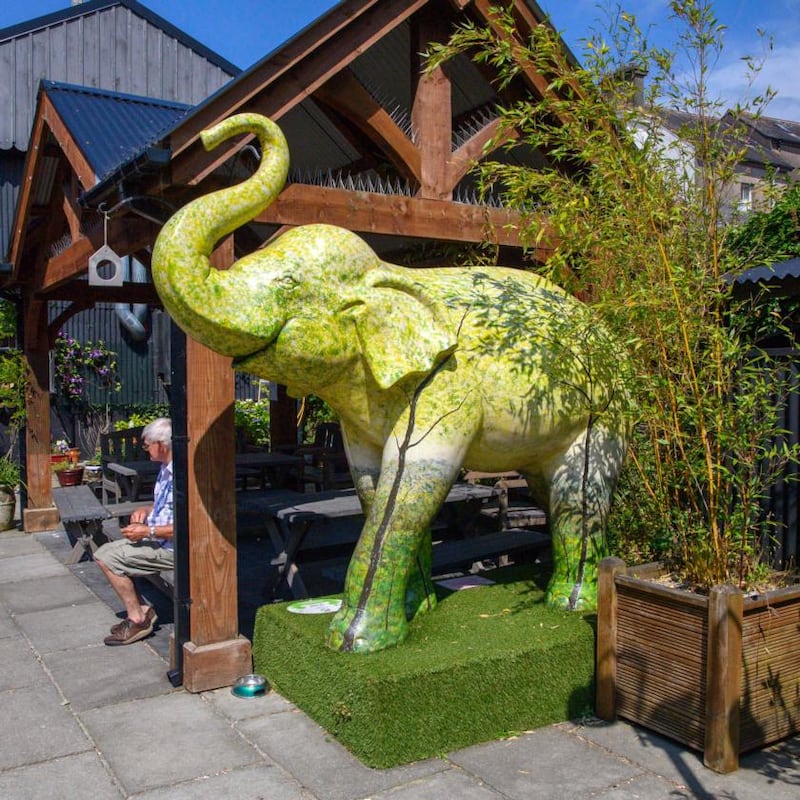
Later, I see a tiger in Spiller’s Lane, a crocodile’s head not far from where I saw the first elephant, a hornbill on a shop front, and an orangutan at the back of O’Donovan’s Hotel. They are all part of a project called “Jungle City”, which dates from 2008, and was focused on raising awareness for endangered species.
Even if you’ve never been to Clonakilty – or “Clon” as the locals call it – you’ll probably know it’s famous for black pudding; a food item I’m partial to. I’m at the Clonakilty Blackpudding Visitor Experience, on the Western Road. It’s in the Clonakilty Food Company factory building, where various meat products are manufactured. The visitor centre first opened in August last year.
The entrance fee is surprisingly steep, at €10 for an adult; to what is essentially a marketing enterprise to promote the company’s products. It’s a self-guided tour, with an audio gadget. There’s an atmospheric mock-up of the original butcher’s shop, where the late Edward Twomey made this blood sausage famous. There’s a safe, within which is apparently the secret recipe, which you are invited to try opening. (Obviously, I fail.) There are observation windows down into the factory floor, where you can see the products being made. At the end, I’m given a little box with some cooked samples of pudding and sausages, and a coffee.
Later, I talk to manager Louise Canty. Who is this visitor experience aimed at?
“It’s a niche product, but a cherished product within Ireland. We wanted to show people what the story behind it was,” she explains.
I ask what the visitor numbers were for the day I visited, but am told, “We aren’t comfortable giving an exact number.”
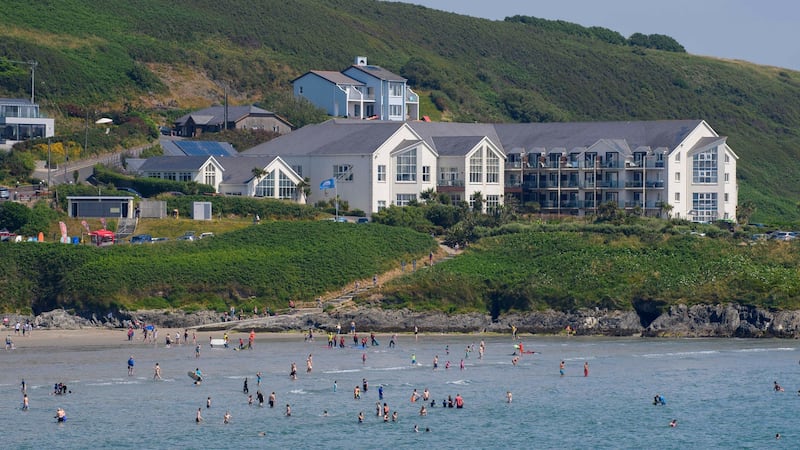
5.30pm Ireland has been experiencing a heatwave, and today is the bluest of days, when the lush summer countryside looks surreally gorgeous, and the fuchsia tumbles scarlet from the hedgerows. I'm driving out the few kilometres to Dunmore House Hotel, which overlooks the Atlantic, and the large development at Inchydoney Strand on the opposite headland. The ocean is flat calm and azure as the sky above it.
“This might be the best day we’ve had all year,” Peter Barrett says. He is the fourth generation of his family to provide hospitality at Dunmore. When I ask what his title is, he explains that “No one has a title here”, although he does describe his mother Carol as “the engine in the kitchen”.
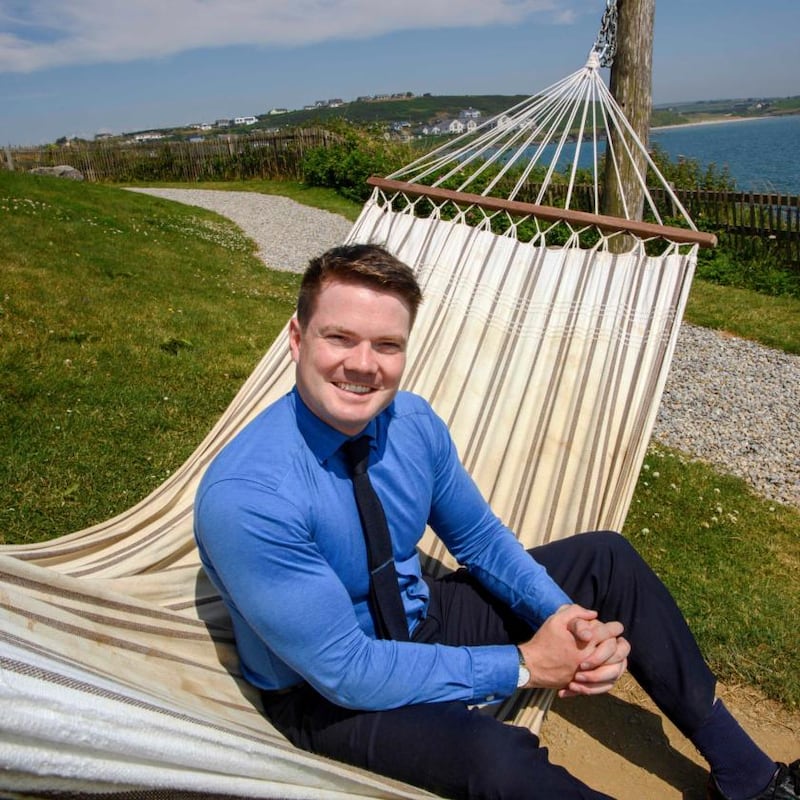
Dunmore must be one of the few hotels in the country that did not lose staff in the last year: they have 85 at present. Inside, it’s a beautiful, elegant, calm space, with the family’s own impressive collection of Irish art on the walls: Seán McSweeney, Patrick Scott, William Crozier. Their menu is based on whatever is available locally. “All our seafood comes from Union Hall [village].” Tonight’s menu in the restaurant includes a warm lobster salad for €17, and turbot with leek risotto, samphire and citrus cream for €30.
The diningroom has a sideboard with a comb of honey in a glass panel and a bowl of eggs from their chickens. “I got very fond of the chickens during lockdown, they are quite endearing,” he admits. Dunmore has its own well, and organic gardens which provide much of the vegetables for the hotel, employing three gardeners.
The place already had extensive outside terraces prior to the pandemic; one of them in the striking shape of a boat. It’s all about the sea views here, and most of the 30 bedrooms have them. Their guests are mainly from Dublin and Kildare. “We’re mostly full, till the end of September,” Barrett says.
7.30pm I check into my hotel in Clonakilty; O'Donovan's on Pearse Street. Dena O'Donovan, who co-owns it with her brother Tom, has already sent me a text to say the hotel car park is full. So I've parked in the public car park behind the hotel. Parking in Clonakilty is free, but as I am to discover, it's also rather complicated.
8pm There are only a few outside tables at the back of Sugan on Wolfe Tone Street. Not all of them, including mine, have umbrellas, but luckily there's no chance of rain tonight. Here, as in several other restaurants in town, there is an ad in the window looking for staff. The Sugan are looking for wait staff and kitchen porters. If you are a young ambitious person in Ireland right now, and keen to gain experience fast in hospitality, there really never has been a better time to do it, and probably also in a place of your choosing.
Friday, July 16th
10.30am Parking in Clonakilty is akin to car musical chairs. The hotel's own car park holds only eight or nine vehicles, depending on their size. It's still full. My car is still in the public car park behind, but even though I'm not using it today, I can't leave it there. There is a two-hour maximum on the free parking from 9am. After that, the roving warden will leave a ticket.
So I spend a whole hour driving the car to Deasy’s car park, and waiting there, while hoping the hotel car park will empty out. By the time I drive back, it’s still full, so I park again in the credit union car park and wait there until finally, a car leaves the hotel car park. It’s an infuriating system.
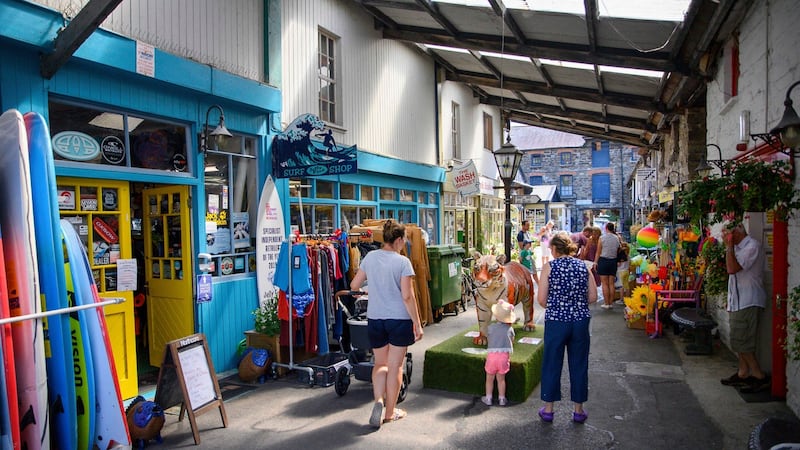
Noon Friday is farmers' market day in the town. It's held in the picturesque green space of Emmet Square, framed by Georgian houses; one of which Michael Collins once lived in. There are some 30 stalls, selling a mix of organic vegetables and meat, craft, takeaway food, soap, chocolate, sheepskins, knitted baby clothes, and even one offering on-the-spot henna tattoos.
Mark Stewart is at Hungry Crow, which sells dairy-free and gluten free chocolates and truffles, as well as watermelon lemonade. I gulp down a deliciously cold tart cup of it for €2. Stewart, from Co Donegal, has been living in the town for 22 years.
“Clonakilty has become gentrified,” he says. “It used to attract a certain type of blow-in. People who were characters. Now it’s people with money who are coming. And there is nowhere to rent anymore, let alone cheaply. Airbnb has a lot to answer for.”
Sadie Hubbard’s stall, Wild Atlantic Soaps, sells mainly seaweed-based soaps and shampoo bars, all of which she makes herself. “I moved here from England in 1992,” she says. “It was a much more colourful place then, and everyone knew everyone. The people who were here when I was here first are all gone now. It’s impossible to find a place to rent. Houses are twice the price of what they were. People are moving west now. The further west you go, the cheaper it is.”
Dave Louks is resplendent in a Kenny Rogers T-shirt. “I went to see him in Killarney years ago, and I got mobbed by fans who thought I was him,” he says. Louks, who is known to all as “Chicken Dave”, is the longest-standing stallholder at the market. He sells his own free-range eggs for €2 a half dozen, and free-range chicken. “I saw the organic food thing coming,” he says. “I was told years ago, nobody would spend €15 for a chicken.” Today, he has one for €18.
In 1995, Louks came on holiday to Clonakilty from his home in Yorkshire. “We got here on Monday. By Thursday, I had found a house to rent.” He never went back. “I’d be dead by now if I had stayed, to be honest with you.”
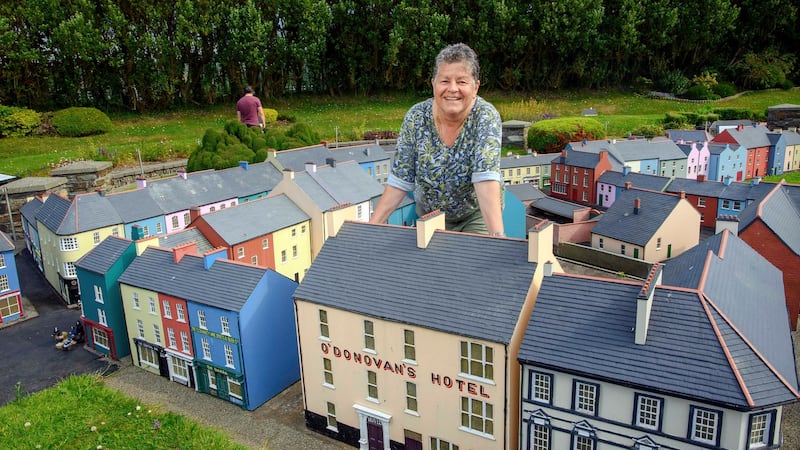
2pm The West Cork Model Railway Village, a short walk from Emmet Square, used to be the location for the town dump. On hot days such as today, the smell must have carried into the nearby streets, and lingered there.
“In the 1980s, the biggest employer in town was a wallpaper factory,” says Donie Walsh, deputy manager. “During the recession, the factory closed. It had employed abut 200 people, and they all lost their jobs. Local people in the town got together and formed Clonakilty Enterprise Board. Tourism was kind of kicking off in west Cork at the time. A few of the members of the board were on holiday in the UK and happened to come across a model railway.”
Funding was granted, and 60 people employed on a Fás scheme, to build the model village and railway that now exists.A professional model maker was brought in to do the training. It remains the only model village in Ireland, employing 21 people.
We had 300-plus visitors in yesterday. Kids spend hours running after the trains
The model village is actually a few villages: based on stops along the way of the old West Cork Railway, including Clonakilty, Bandon, and Kinsale. I spend some time walking around the site, towering over the churches and houses and shops. There is a tiny version of Emmet Square, on whose lawn I have just been sitting, eating lunch bought at a market stall. There is a model of O’Donovan’s where I’m staying. There are rural scenes too, of farms and houses and cows and sheep. Through all of this, little model trains hoot and rattle back and forth with fortitude, under tunnels and over bridges and through fields.
The whole thing is totally low-tech and unexpectedly charming in its simplicity and authenticity. I find myself beguiled by the tiny towns and their rustic craftsmanship. Google Maps is on my phone, but you won’t find this version of Clonakilty on their app. The original models fell apart in time, and their exact replicas are now made of solid fiberglass; a material which some boats are constructed from.
“We had 300-plus visitors in yesterday,” Walsh says. “Kids spend hours running after the trains.”
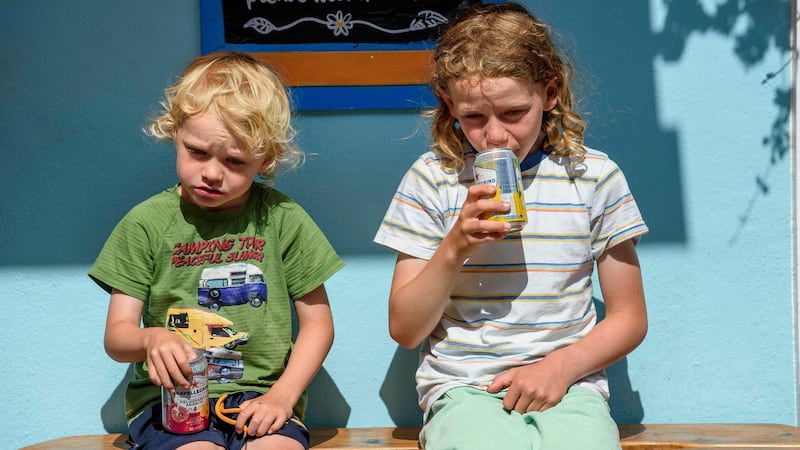
3.30pm "I'll take anything that's going," announces a young woman who's just arrived into the Lettercollum Kitchen Project on Connolly Street. It's a vegetarian cafe, bakery and deli. The shop closes at 4pm, and it's almost out of the day's salads and quiches. Today's salads included Greek potato salad; butter bean, butternut and basil; chickpea and courgette; and Asian slaw.
“We’ve had the cafe for 15 years,” explains Karen Austin, who owns the shop with her husband, Con McLoughlin. All of the vegetables used in the cafe come from their walled garden at Lettercollum: “We’ve been organic for 39 years,” she says. There’s currently an abundance of spinach, chard, kale and soft fruit. They also have many chickens, but can’t sell the eggs in the shop. “You can only sell eggs in the the farmer’s market.” But they use the eggs for cooking.
Austin has seen Clonakilty change over the four decades she’s been in the area. “It’s a very sought after place to live. Property here is moving towards city prices, especially since the pandemic.”
Cash & Co on Rossa Street is the kind of drapery that used to be commonly found in Irish towns, and are now rarer and rarer. They have clothing for men, women, and children. There are also stands of ribbons, buttons, and thread, and rolls of tablecloth fabric, to be cut by the metre. There are pigeonholes of folded shirts. Stacked cardboard boxes on shelves, their contents meticulously described in neat black pen: Arm Caps; Chair Backs; Gents Gloves; Lds Leather Gloves; Socks 4-7, kneehigh. It’s a shop clearly so full of character, and takes a genteel pride in its many varied contents.
I stop at Scully’s Butchers Shop on Pearse Street, around the corner. Not to look at the meat on display inside, but to stare at the object outside the shop. It’s the figure of a black man, the size of a child, atop a wooden plinth.
He’s dressed in an oversized white shirt and red striped butcher apron, and holds up a plate in his right hand. Hanging from the crook of his elbow is a sign in red marker advertising “delicious cooked chickens (with homemade stuffing) only €6.50”. Nobody except me seems to be taking any notice of it.
5pm Of the two days that I spend in O'Donovan's Hotel, Dena O'Donovan is rarely absent from the check-in desk. She and her brother are the sixth generation to run this hotel, and she knows everyone. My phone pings regularly with another name of a person O'Donovan thinks might be interesting to meet. It was O'Donovan who offered the farmers' market space in the hotel laneway and car park for some years. when they were moved on from the public car park. She moved the residents' cars herself each Friday morning to accommodate them.
The hotel has 21 bedrooms and they were all full last night. They had to turn away an additional 17 people looking for accommodation.
“There are eight hotels in the Clon region within a three miles radius. That is phenomenal for a small town, and we all do very nicely,” she says. “Even in the middle of winter, we never have nobody in the hotel.”
They took on 10 additional staff in the last month, and could do with more. “It’s mostly students. They’re learning. Sometimes the guests can be quite rude: saying things like, ‘Your staff are untrained’.” She rolls her eyes. “Have they any idea how hard it is for us to get staff and to train them?”
6.30pm The sun is still so bright and strong that people are choosing tables in the shade at Arís wine bar on Ashe Street. Windows are open all along the street at levels over the shops, which suggests that unlike many other Irish towns, people here are living in the centre.
I order a mezze platter and phone Jack Kelleher. Earlier that day, I’d passed Christmas tree yard and seen an eclectic group of people within, clustered around dismantled bikes. It had an unusual cafe-type vibe. When I returned, it was closed, but of course, Dena O’Donovan had Kelleher’s number.
Kelleher (78), a former academic from California, runs the non-profit Bike Circus with Glaswegian Graeme Ghillie. “It’s Ireland’s only bicycle apprentice bike programme,” he explains. The space was offered by Colette Twomey, relative of the famed Edward, and owner of the Clonakilty Food Company.
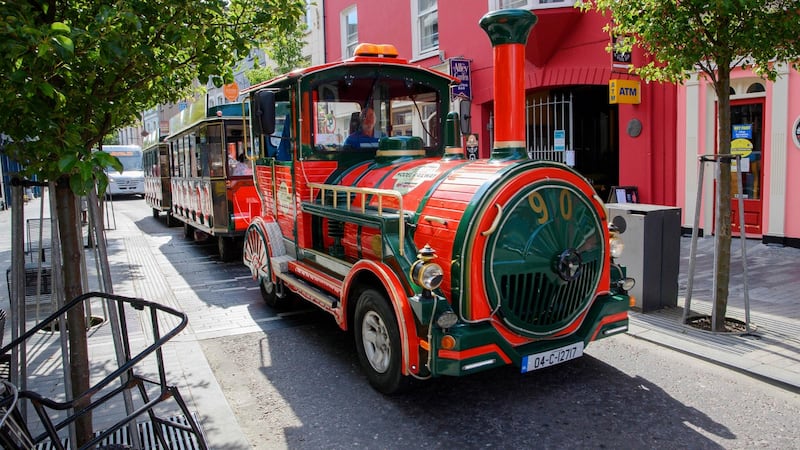
It’s free to take the 100-hour course to apprentice to be a bicycle mechanic, which Kelleher and Ghillie oversee. They practise on bikes belonging to locals or tourists, who donate a small fee for the service. The social enterprise is supported by the community: membership is €20 a year, and they have 200 members.
The Bike Circus also operates as a kind of unofficial meeting place for whoever wants a chat, or is feeling lonely, which explains the cafe-like feeling it exuded when I looked through the gates earlier that day.
“Clonakilty is a magnet for energetic blow-ins,” Kelleher says. “The problem is, there is nowhere here to rent any more, no matter what your income is. I’ve had apprentices camping.” What, he wonders, will happen to the next generation of “energetic blow-ins” who wish to make their home here?












